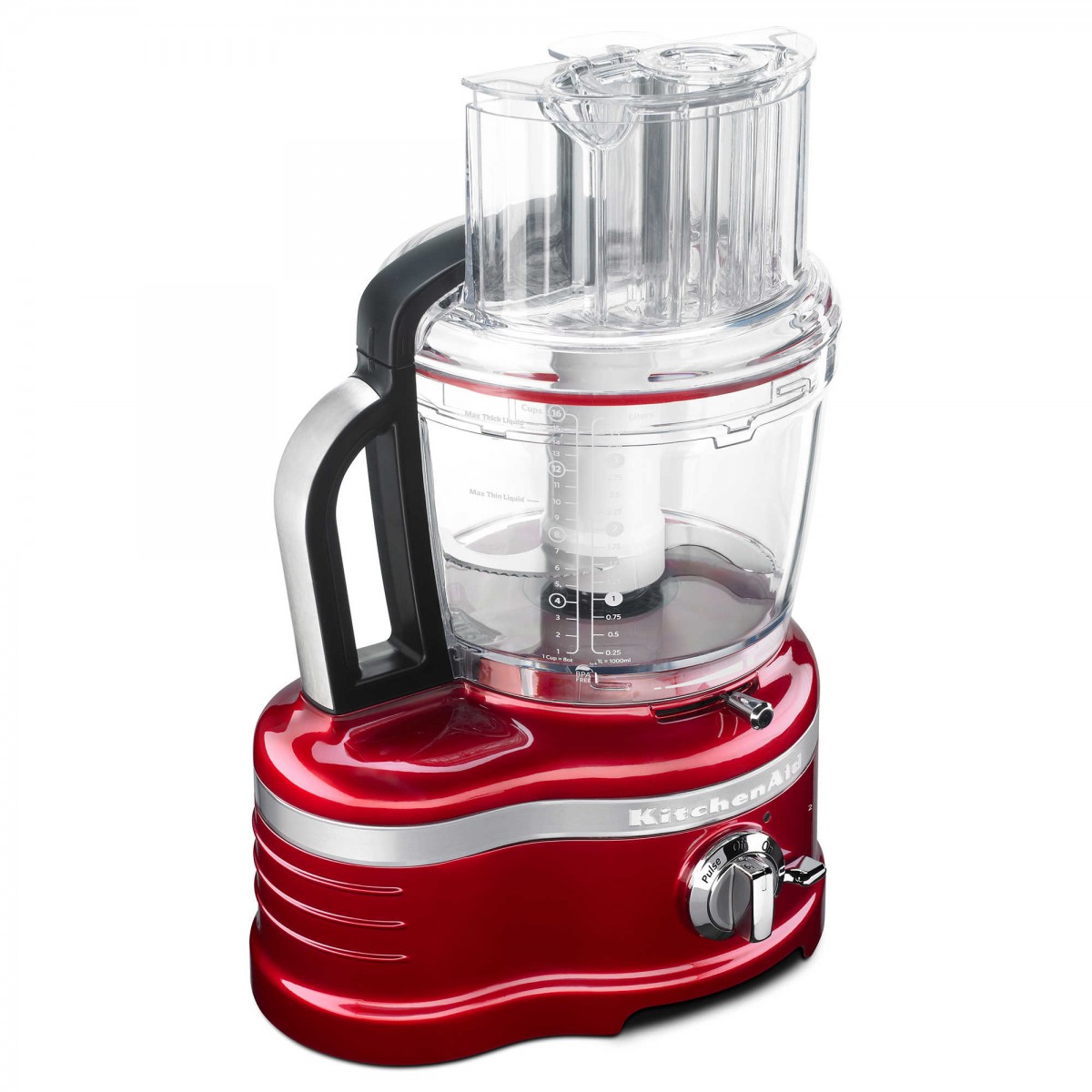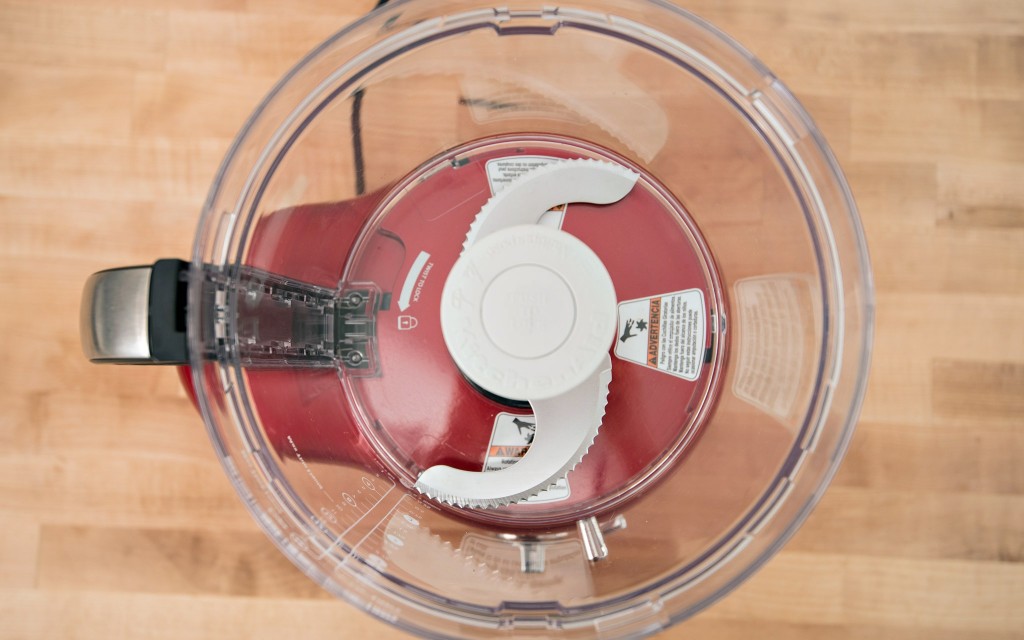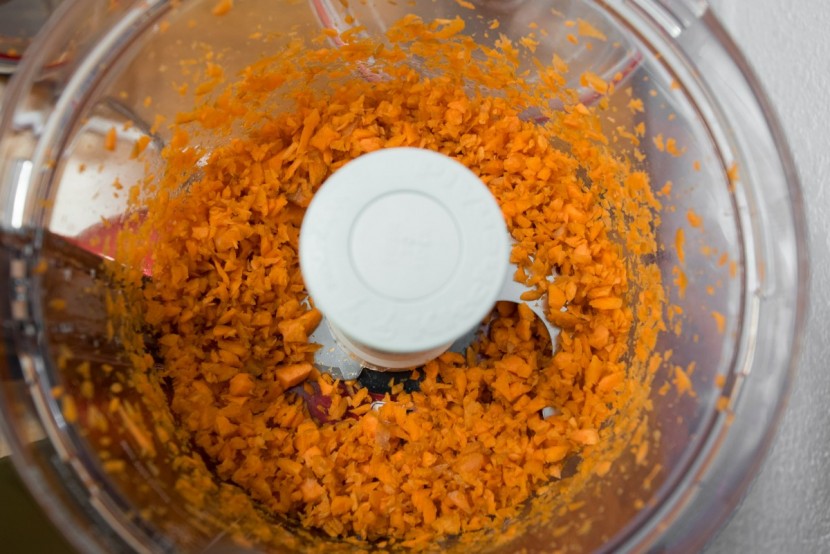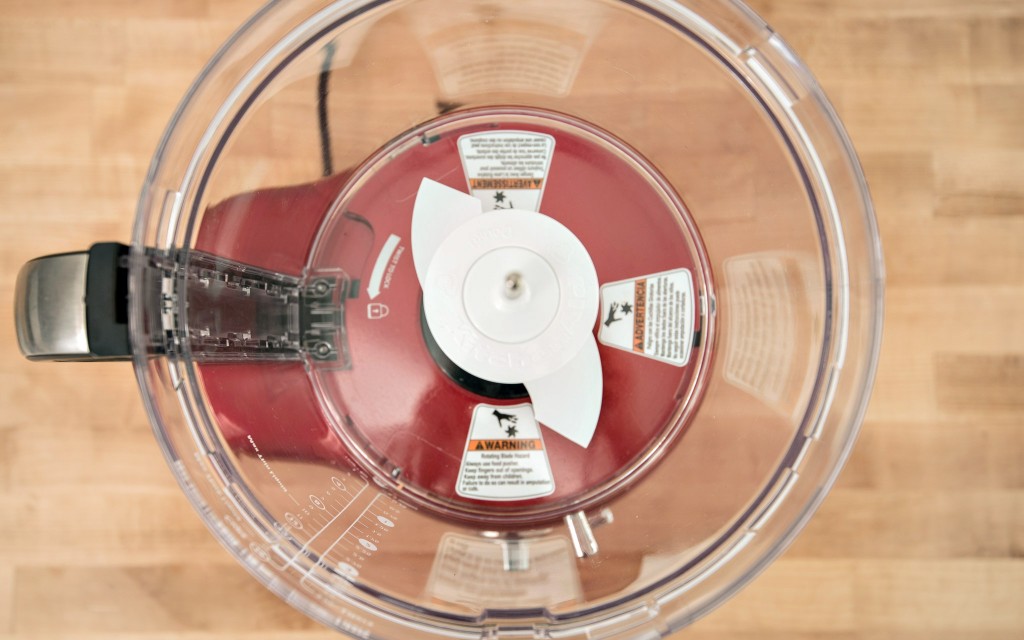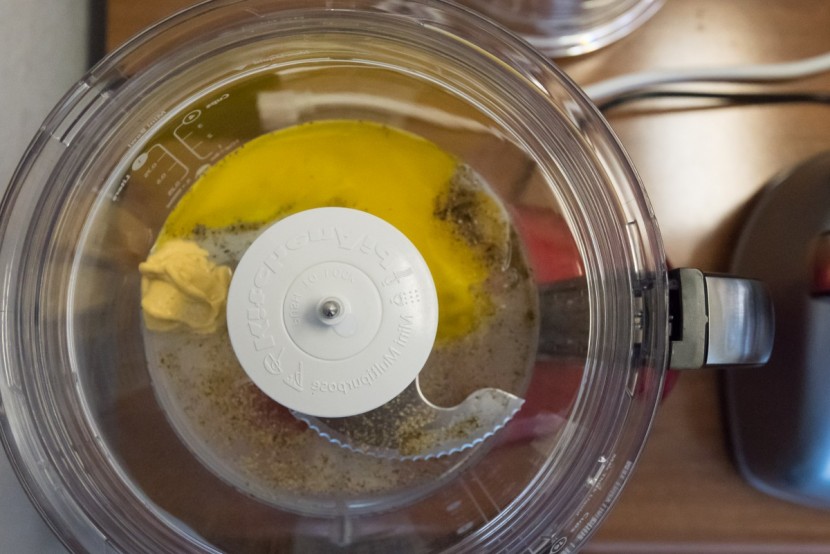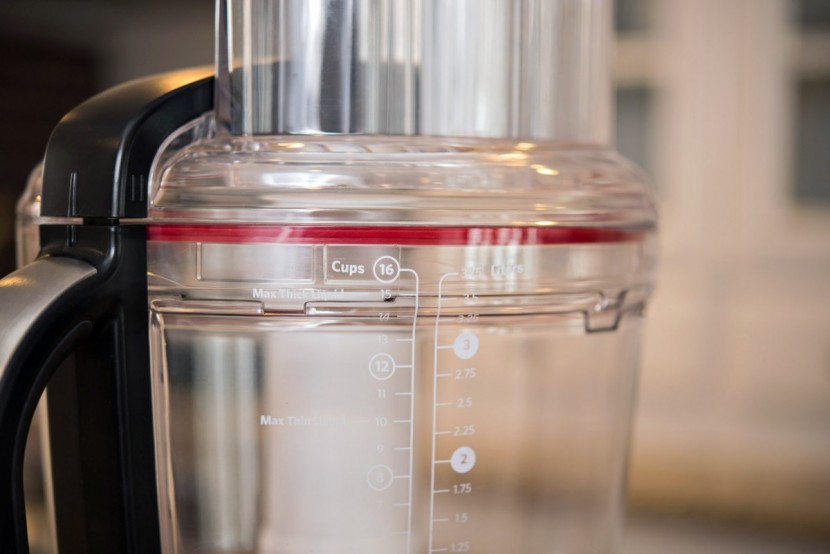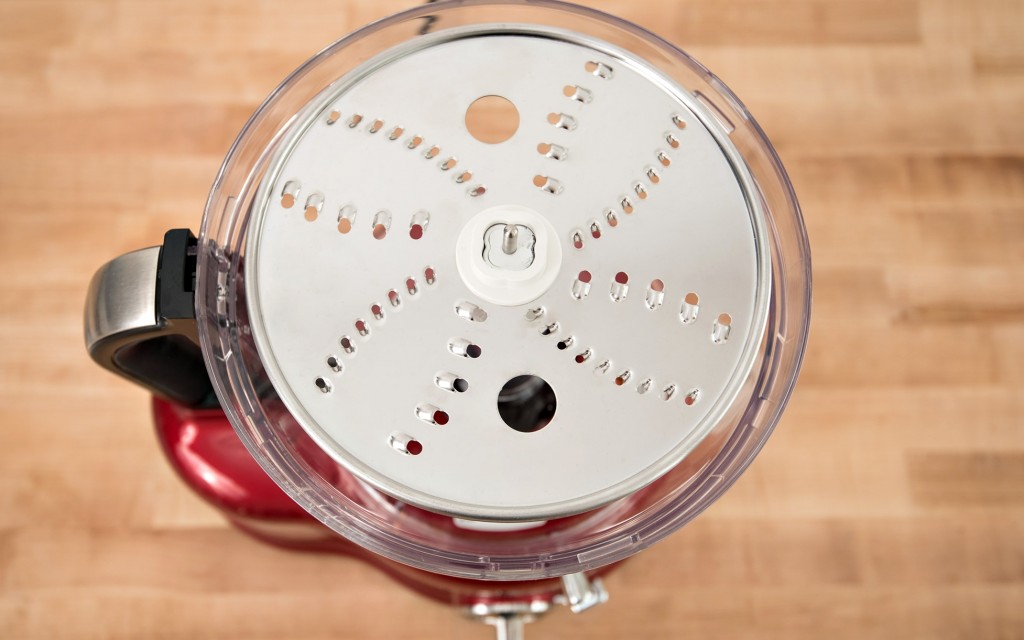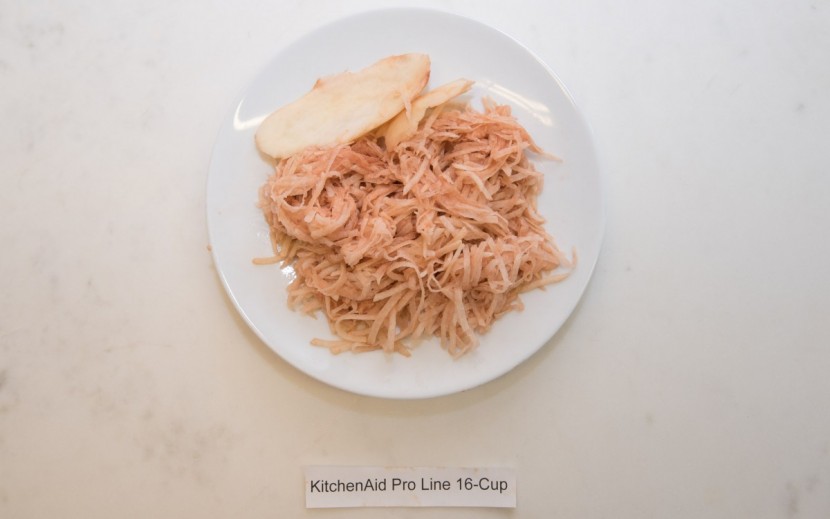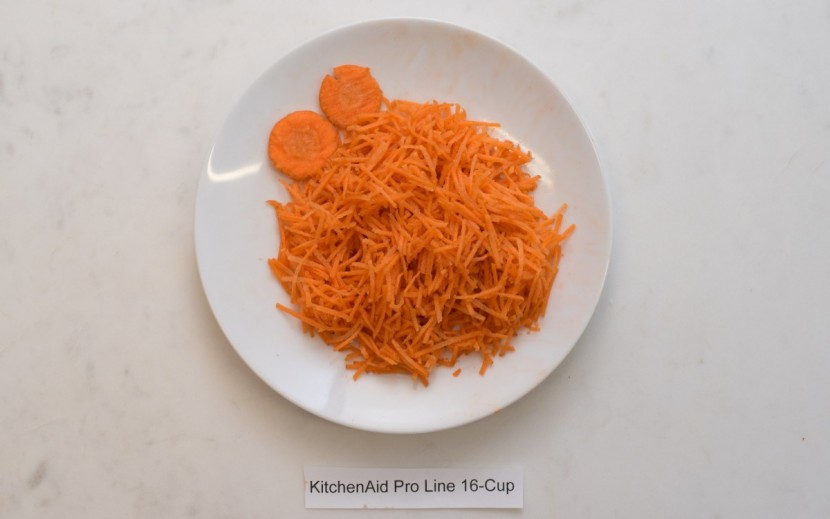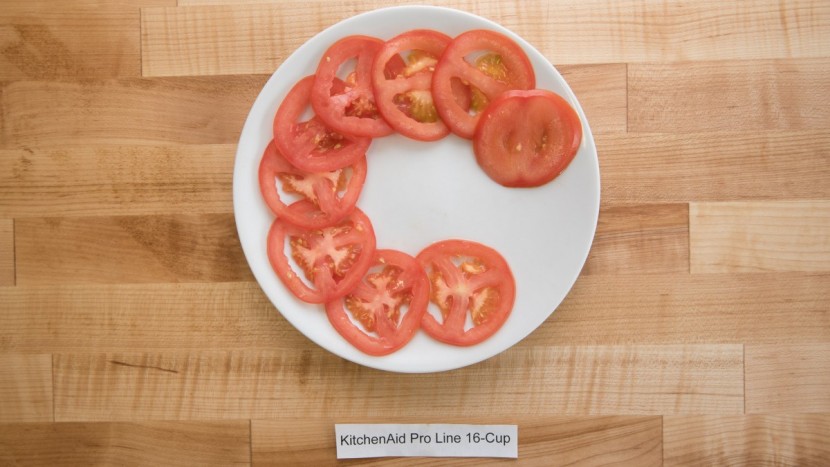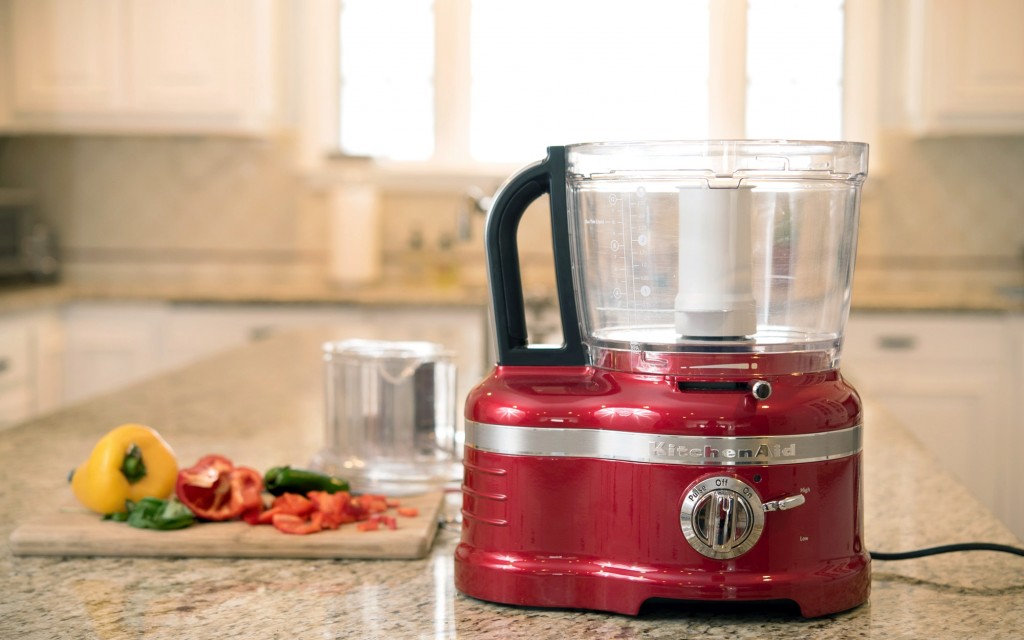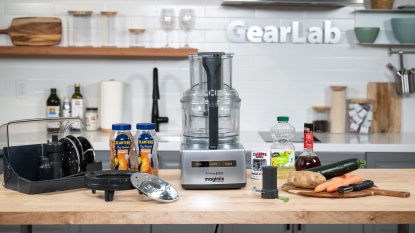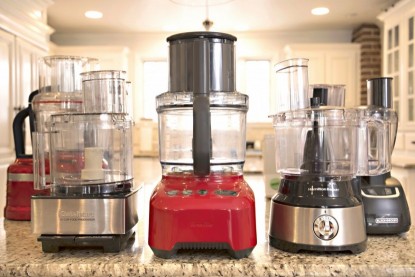KitchenAid Pro Line 16-Cup Review
Our Verdict
Our Analysis and Test Results
The KitchenAid Pro Line is large, expensive food processor. Unfortunately, its performance didn't match its price, and while scoring well, didn't take home any awards. We thought this model might take home the top score for mixing, as KitchenAid is known for making stand mixers and thought that the experience would carry over, but this model was beaten by a handful of other models in that metric.
Performance Comparison
We spent over eight weeks putting these kitchen appliances to the test to see which one came out on top. The overall score was determined by aggregating the subscore for each of our six weighted metrics. These, in turn, were composed of over 25 different tests, ranging from shredding carrots to mixing pie crust dough. The next sections highlight the results of each test and how the KitchenAid Pro Line performed.
Chopping
This model delivered a solid performance in our set of chopping tests, meriting it a 7 out of 10. This put it in a tie for the runner-up position with the Braun and the Hamilton Beach 10-Cup, but ranking just behind the Breville Sous Chef. We chopped carrots, onions, and almonds to see how uniform the chop was, as well as timing how much residual spin the blade had after the “Pulse” button was released, to see how much control you had over the machine.
This model stops immediately when the blade is released, affording you a nice amount of control over the machine. It also produced very nice chopped onions, tying for second best overall with the KitchenAid 9-Cup and the Cuisinart Elemental. These onions were very uniform and of proper size, with only a few larger chunks in the mix.
Quality dropped a little when chopping carrots, only performing slightly above average, just a tad bit worse than the Black+Decker or the KitchenAid 9-Cup. The carrots were a little too mushy, and a handful of larger pieces that prevented this model from getting a higher score.
This food processor did about average at chopping almonds, requiring about 16 pulses to reach a level comparable with the top scorers. Unfortunately, this created a lot of pulverized almond dust in the process.
Mixing
We mixed up some mayonnaise, pie crust dough, and pizza dough to assess the mixing aptitude of each machine, deducting points for signs of a struggle and awarding points based on the consistency of the mixed product. The KitchenAid Pro Line did a little above average, earning a 6 out of 10 for it mixing capabilities, mainly boosted by its superior mayo mixing performance.
While the motor didn't give signs of struggle, this model did abysmally at mixing pizza dough. This was the only machine that required human intervention to scrape down the bowl to successfully incorporate the dry and wet ingredients, eventually forcing us to give up and finish the dough by hand. Needless to say, this model received the worst pizza dough score.
It did much better when mixing mayo with our 1-Cup recipe, producing an acceptable finished product without too much difficulty.
Performance did drop back down for the pie crust dough test, tying for the lowest score of the group with the KitchenAid 9-Cup and the Hamilton Beach Professional. The pie crust was wet when we rolled it out, due to uneven mixing and failing to incorporate all of the necessary flour.
Pureeing
The KitchenAid Pro Line did a similar job in our pureeing test, earning a 6 out of 10, the same as the Braun, Cuisinart Elemental, and the Cuisinart Elite. We compared the quality of the applesauce, tomato sauce, nut butter, and hummus created by each machine off of identical recipes to determine scores, as well as performing a leak test — filling the bowl to the maximum fill line with water and running the machine.
This model did well at making applesauce and nut butter, tying for the best applesauce and the second-best nut butter. It took about 14 minutes to create acceptable nut butter, only requiring a single scrape with a spatula right in the beginning. The applesauce was created in about 15 seconds and was a perfect consistency. This model had zero leaks, with the water well above the seal when the machine was turned on.
Quality dropped a little when pureeing tomato sauce, with the product produced being about average, being a little chunkier and taking longer. The hummus was a little better, scoring above average
Shredding
This is the only category where this model really fell short, earning a poor 3 out of 10 for its subpar shredding performance, tying for the last place overall in this metric. We shredded cheese, potatoes, and carrots to assess this, and the KitchenAid Pro Line wasn't up to snuff for any of them.
The shredded cheese produced by this machine was thin and flimsy, with much larger cheese crumbles than the other KitchenAid model. The feed tube just barely fit the 2lb block of cheese without trimming. It did about the same quality when shredding carrots, producing very wet and grainy shreds.
The quality dropped even further when shredding potatoes, producing some awful, inconsistent shreds. The sizes of the shreds were all over the place, worse than the Black+Decker.
The shredded carrots were also subpar, producing wet, grainy shreds that wouldn't have been ideal on a salad.
There was a fine and medium shred setting on the disc, which was the only part of this metric where we appreciated this model.
Slicing
Redeeming itself for its terrible shredding performance, the KitchenAid Pro Line earned an 8 out of 10 for its slicing skills, tying for the top score overall. This model did an excellent job slicing tomatoes, zucchini, and potatoes, as well as an adjustable slicing disc, all contributing to its high score.
This model fit our largest tomato in the feed tube, though it was a tight fit. The tomato slices were even and consistent, with little taper. The sliced potatoes were slightly more tapered than the tomatoes or zucchini slices but were still very, very high-quality.
The zucchini slices were also very good, but not quite as high-quality as the zucchini slices produced by the other KitchenAid model.
Cleaning
The final part of using any of these products is the dreaded cleanup. We rated these products on whether or not they were safe for the dishwasher, as well as how hard it was to clean the various components manually. The KitchenAid Pro Line was slightly above average in terms of being easy to clean, earning a 6 out of 10 like many other models.
The bowl, blade, lids, and discs are all dishwasher safe, with the diagram appearing to show that the top shelf in the dishwasher is the most suitable. The blade is on the longer side, making it very easy to wash without getting cut. The bowl and lid were a little harder, but there were no particularly problematic spots that would capture food scraps, except for one or two spots on the largest lid piece.
Value
This model is a pretty terrible value, scoring in the middle of the pack but possessing an exorbitant list price.
Conclusion
All in all, this is a solid food processor, but definitely not the best out there. It's serious shredding flaw coupled with its high list price make it clear that you may be better served by other models.


